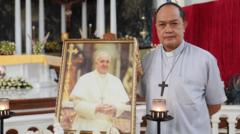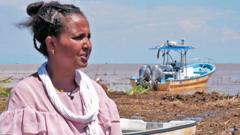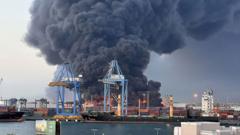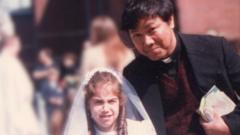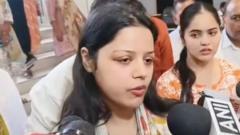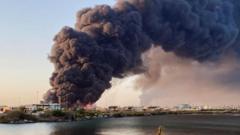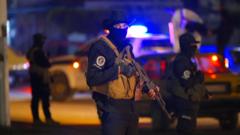Medical professionals in Syria face immense challenges as they strive to identify remains from mass graves, shedding light on the horrific realities of the civil war while families seek closure for their lost loved ones.
Unraveling the Past: Medics Battle to Identify Victims from Syria's Mass Graves**
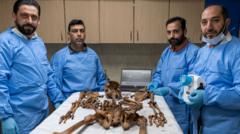
Unraveling the Past: Medics Battle to Identify Victims from Syria's Mass Graves**
An exploration into the painstaking efforts of medics working to identify the remains of thousands missing in Syria's turbulent history of civil war.
Dr. Anas al-Hourani stands amidst an array of human remains at the newly-established Syrian Identification Centre, overwhelmed by the grim task ahead of him. He gazes at the femur bones laid meticulously on tables, each representing an individual life extinguished during Syria's brutal 13-year civil war. "These are from a mixed mass grave," he explains, hinting at the infamous legacy left by former president Bashar al-Assad and his father's regime, which claimed hundreds of thousands of lives.
The identification process begins cautiously, as forensic odontologist Dr. al-Hourani emphasizes the potential information contained in bones. From height and sex to hints of past occupations and signs of torture, a femur offers vital clues. However, with only one operational DNA testing facility remaining in the country, the task remains daunting. Years of sanctions have devastated resources, limiting crucial supplies necessary for modern analysis. The costs are prohibitive, requiring upwards of $250 per test, and the anticipated number of tests multiplies significantly within mixed mass graves.
Despite the new government prioritizing transitional justice, many citizens feel disheartened by the slow progress in identifying their disappeared loved ones. It is estimated that over 130,000 people remain forcibly disappeared under Assad’s government, with only a fraction identified thus far. "This will be the work of many years," Dr. al-Hourani remarks with grim realism.
As international media is allowed to witness the mass grave sites outside Damascus, chilling accounts from individuals like Hussein Alawi al-Manfi—known as Abu Ali—unfold. For over a decade, he transported civilians' corpses under the regime, detailing grim routines where he loaded trucks with bodies subjected to unspeakable violence.
Meanwhile, personal narratives surge forth from those shaped by loss and uncertainty. Malak Aoude returns to Syria, her heart heavy with the burden of her two sons, both victims of the regime’s brutal crackdown. Desperate for information, she scours school records in search of her missing son's name while grappling with grief and frustration.
While some Syrians celebrate a shift in power, they remain haunted by unanswered questions about their loved ones. "It’s not just about freedom; families seek closure," Malak expresses sorrowfully. The quest for truth continues to eclipse the flicker of hope in a land scarred by unimaginable horrors.

